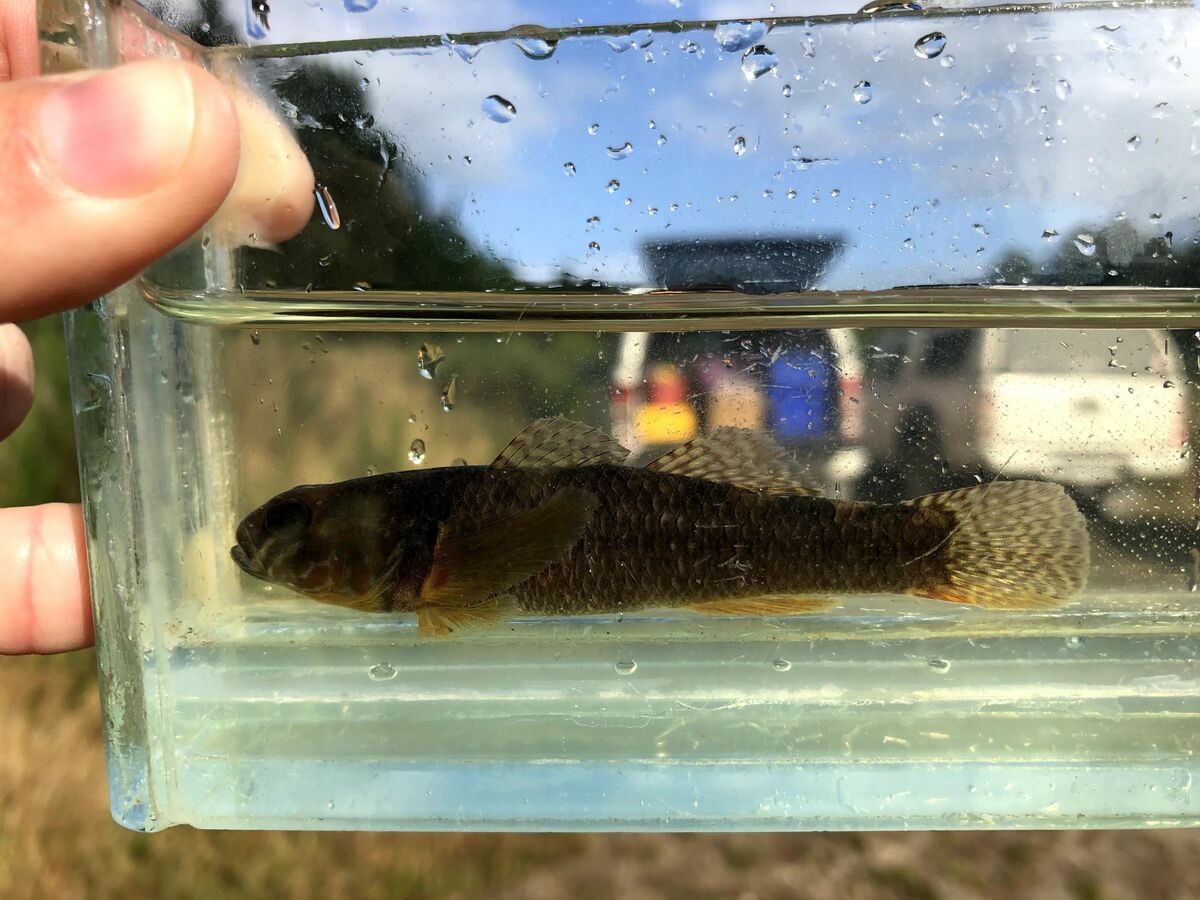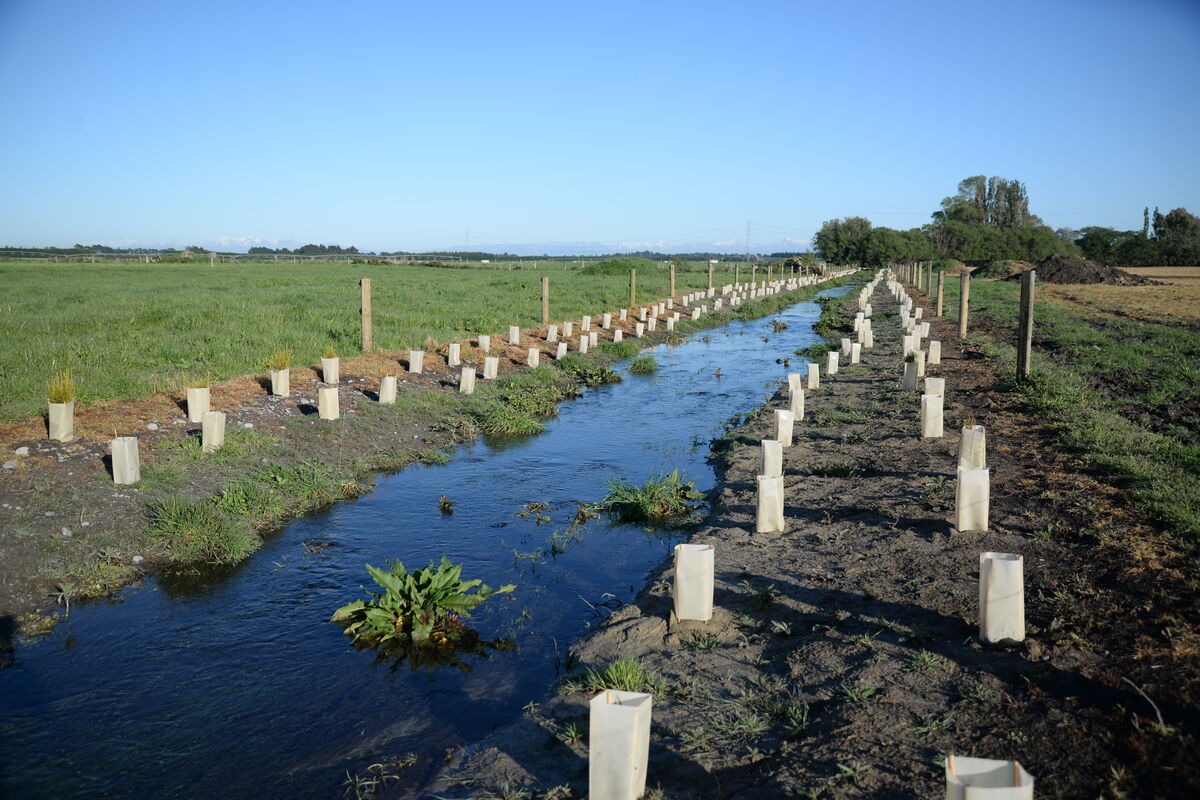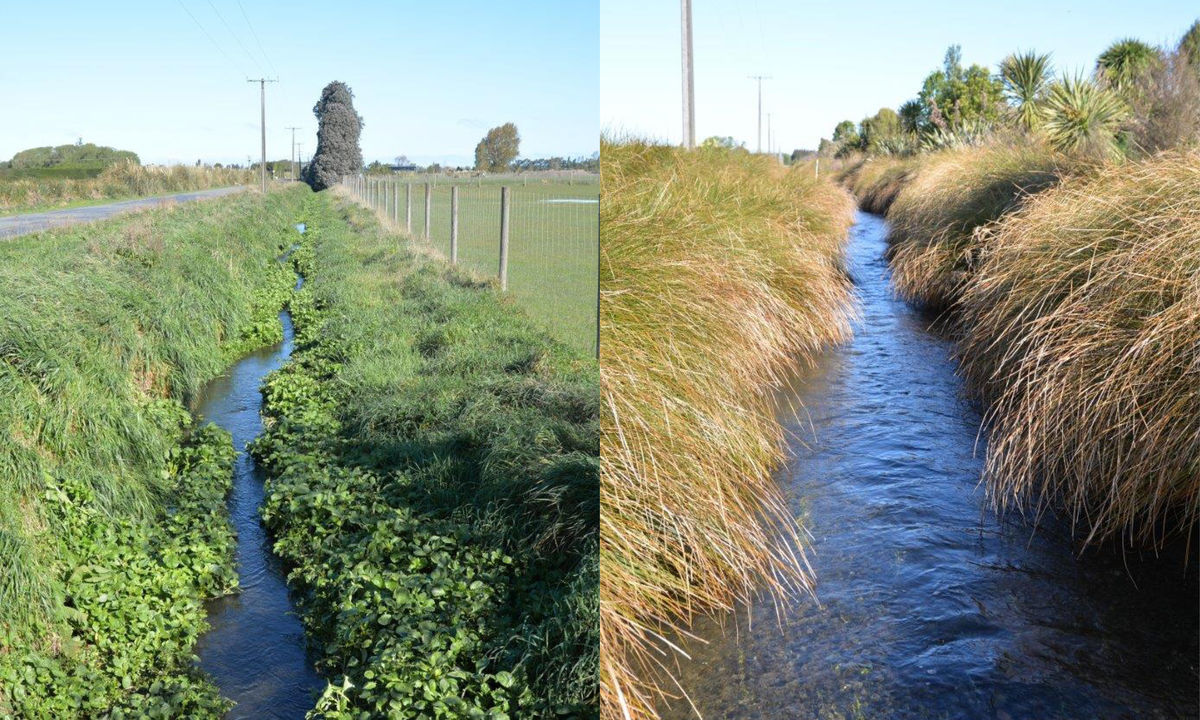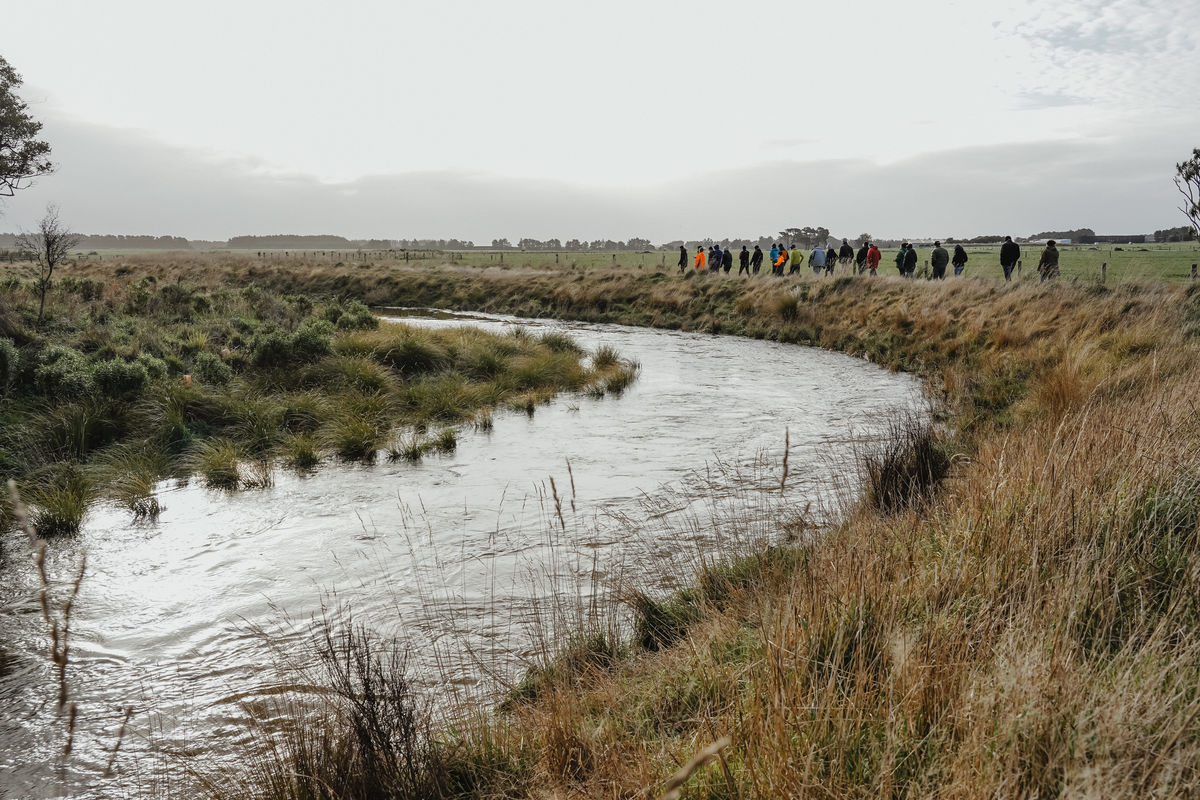
It’s more than a drain, it’s home to our native freshwater fish
Much of Aotearoa New Zealand’s lowland agricultural land was developed by converting large areas of forest and wetland into pasture. Government subsidies in the 1950s and 1960s accelerated land conversion with the digging of drainage channels and networks of subsurface drains. While this has a lasting effect on our waterways, the drainage networks are essential to some of our most productive land and forms part of the “pioneering” cultural identity of many New Zealanders. Drainage networks contribute a significant volume of freshwater that ends up in our streams, rivers, lakes and estuaries.
“For the past century we’ve managed waterways in productive landscapes and on farms solely for drainage, to remove excess flood water off the land as quickly as possible” explains Dr Katie Collins, Freshwater Science Advisor, Department of Conservation. Vegetation has been cleared on a large scale and wetlands drained for agriculture, lifestyle blocks and urban settlement. This has resulted in straightened waterways – or drains, often without planted margins and steep banks. They are mistakenly perceived as lifeless, functional drains, however, they’re an integral part of the freshwater ecosystem.

Katie Collins
Methods of maintaining these waterways haven’t changed in the last 50 years. Now it’s normal to see straight drains, with deep, incised channels that are typically managed through regular mechanical clearance (of sediment and macrophytes) but this also removes fauna and crucial habitat for freshwater species and can steepen banks which contributes to further slumping and erosion.
Artificial drains are straightened to have fast flows, to get water off the land and prevent flooding. Naturally, waterways have curves and bends, pools and riffles, logs, stones and debris that slow flows, allowing suspended sediment to settle before reaching lowland destinations. In heavy rainfall, straightened channels exacerbate flooding with no wetlands or riparian margins to help absorb or slow water. The roots of plants and trees in these areas help hold together the soil, preventing erosion and reducing the amount of sediment and contaminants that are discharged into waterways in high flows.
“The effects of draining wetlands and channelising waterways has wide-ranging impacts on water quality and biodiversity. The waterways themselves are undervalued even though they are home to native freshwater species and flow into lakes, rivers and the sea where we expect to be able to fish, swim and recreate. We need to look at how we can return the natural functioning of waterways to restore their health and the health of downstream waterbodies” says Dr Collins.

Balancing tradition with innovation
Over the past decade, Living Water has been trialling natural solutions to restore lowland waterways without impeding drainage. A project in the Waituna catchment in Southland, the Lower Waituna Creek Restoration Project focused on improving habitat for native fish. “We created flow variability with logs and bundles of manuka, an artificial flood plain by building a two-stage channel and extensive riparian planting to provide shade and habitat for insects that provide food for native fish” says Dr Collins.
Living Water’s work in Waituna Creek demonstrates the use of different restoration and water management concepts that could be implemented throughout catchments. “We know this project was successful because we conducted fish surveys before the work commenced and after it was completed. The surveys show an increase in fish numbers and biomass. During the drought of 2022 the restored section of creek was the only place certain fish species were found living, which is an amazing validation of the value of waterway restoration.”
A similar, but smaller project was carried out in a 500-metre section of a roadside drain in the Ararira-LII catchment, Canterbury – the Powells Road Waterway Enhancement Project. The project incorporates Living Water’s earlier trials and research done with the University of Canterbury’s CAREX team, which consisted of bank re-battering, riparian planting, instream habitat additions, sediment traps, a two-stage channel and bioreactor. It was important to research whether ecological and drainage outcomes could both be achieved with new approaches to waterway management.
“Through these trials, we found our actions often provided multiple benefits,” says Dr Collins. The primary purpose of planting in Powell’s Road was to minimise excessive aquatic weed growth, but other benefits included creating fish and invertebrate habitat, increasing dissolved oxygen levels, cooler water temperatures, bank stabilisation. This led us to ask, “what if we reimagined the entire Ararira-LII catchment drainage network to remedy existing challenges while enhancing biodiversity and cultural values?” says Dr Collins.

Te Taumutu Rūnanga have long been calling for changes to the management of the waterways and drains that feed into Te Waihora/Lake Ellesmere. Living Water facilitated an MOU between Te Taumutu, Selwyn District Council and Living Water to work together on how to approach waterway management differently, to enhance cultural and ecological values while maintain effective drainage. A project team was established to co-design a catchment management plan and implementation guide for Selwyn District Council as the drainage administrator. The Catchment Management Plan brings together a suite of catchment scale and ‘toolbox’ (reach-scale) solutions designed to create improvements for the Ararira/LII catchment’s network of waterways. The Implementation Guide is designed to complement the Catchment Management Plan by providing guidance on the tasks and activities required to achieve the vision for improving waterway health. It supports agencies and catchment partners in planning and coordinating their efforts towards constructive collective action.
The documents are the cumulation of two years of co-design work by Living Water and a project team involving representatives from Te Taumutu Rūnanga, Selwyn District Council, Fonterra, Department of Conservation, Environment Canterbury, and the LII Drainage Committee, supported by consultants Aqualinc, EOS Ecology, Cawthron and Learning for Sustainability. Read about the co-design process here.
Selwyn District Council has begun the process of applying the same approach to other Te Waihora catchments with the aim of increasing investment for alternative management approaches for these waterways. Dr Collins says as a ‘blueprint for change’, these plans could be applied to other drainage districts within the Te Waihora catchment and other lowland regions elsewhere in New Zealand.
Waterway health and land drainage can co-exist
“We’ve demonstrated that native fish can thrive in farming environments if we slow the flow and add habitat back. We’ve also demonstrated the benefits of co-designing a process to reimagine waterway management and the efficiencies of working at a catchment scale’, says Dr Collins. Approaches like those taken in the Waituna and Ararira-LII catchments show that enhancing waterway health can be intertwined with addressing drainage needs. ‘We know that managing for ecological and cultural benefits can co-exist with maintaining drainage, at both a small scale and a catchment wide scale. Building on this mahi, we want to see plans like this developed and implemented around the motu” says Dr Collins.
<-- Previous story: Data-driven solutions for freshwater improvement
